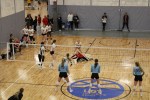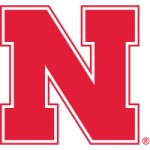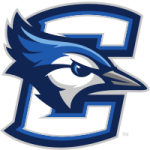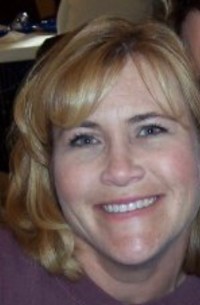Creighton’s Booth, Omaha’s Shires Give Thoughts on New Recruiting Rules

This week, significant change came to NCAA Division I Women’s Volleyball’s recruiting and Creighton coach Kirsten Bernthal Booth and Omaha coach Rose Shires said the changes are a very good first step in the right direction. Here is a basic…
Access all of Prep Dig
Continue reading this article and more.
Continue ReadingThis week, significant change came to NCAA Division I Women’s Volleyball’s recruiting and Creighton coach Kirsten Bernthal Booth and Omaha coach Rose Shires said the changes are a very good first step in the right direction.
Here is a basic breakdown of four major changes.
1.) Recruits can now take official visits beginning Sept. 1 of their junior year. An official visit is one where the school pays for the expenses by the prospective student athlete. Previously, official visits could not take place until the athlete’s senior year – a time frame that meant very few volleyball players took official visits during the recruiting process, but rather after they had already committed.
2.) An school’s athletic department can not be part of an athlete’s unofficial visit until Sept. 1 of their junior year. An unofficial visit is one taken at the expense of the athlete. Previously, an athlete who was a freshman could go on an unofficial visit of a school and its campus, etc., and also meet and talk with coaches and athletic department members. That is no longer the case.
3.) At college camps and clinics, coaches can not have discussions with players about recruiting until Sept. 1 of their junior year. This means if an uber-talented 8th grader is at a summer camp for University X, the coaches at University X can not offer or have recruiting conversations with the athlete unless it is after Sept. 1 of their junior year.
4.) The number of active recruiting days in the calendar has been shrunk with there now being more “quiet periods.” Previously, college coaches could hit the recruiting trail in full force beginning in mid-January. That has no been pushed back to President’s Day weekend. Memorial Day weekend is also now part of a “quiet period,” which means those big club tournaments that are before President’s Day or on Memorial Day weekend will no longer be recruiting destinations for Division I coaches.
With these changes, however, it is important to note that nothing has changed in relationship to an athlete’s ability to contact coaches. As long as an athlete initiates a phone call with the coach, coaches may still talk with an athlete regardless of their age or grade. College coaches can also still speak indirectly to athletes through club or high school coaches. So, will there still be kids that get recruited at very young ages? Yes, but the hope is that these changes slow that down. How well these changes work may not be known for a while.
“Like so many things in life, any time there are major changes it’s going to take some time to work through it and see the effects of it,” Booth said. “This is a good first step of needed reform. Eighth and ninth grade is really young for kids to be making major decisions about their future.”
One issue coaches have been talking about quite a bit is the Sept. 1 date for being able to start visits. Not only does that date coincide with things starting to heat up in the college volleyball season, but also hits right at the start of the high school season. Will high school coaches want their athletes leaving for college visits? Will athletes have the time to take the visits? Will it be more of an issue for colleges to host a lot more visits while focusing on their current team during the season?
“While September 1 of a (prospective student athlete’s) junior year of high school for a campus visit is a reasonable date, it does potentially pose issues for the PSA with fall high school seasons and missing extensive amounts of class in a short period of time,” Shires said. “My preference for a start date for a campus visit would be July 1 prior to their junior year, meaning a PSA would have the ability not to miss class time if they so choose. It would also allow for recruiting conversations to take place during an institution’s summer camps, which many recruits are already on campus for.
“I do not believe that will prove difficult for a university’s coaching staff to host recruits during their own seasons, as this is something that currently happens.”
Shires also echoed Booth’s thought that the later a potential recruit can make a decision about college, the better off both the athlete and the college will be.
“The Omaha volleyball program believes the new recruiting legislation is in the best interest of the prospective student-athlete. Choosing a collegiate home is never an easy decision, especially as a high school freshman or sophomore. Oftentimes, these commitments are made by a student-athlete and their parents for what feels right and is what is most important to them between the ages of 14 and 16 rather than when the student-athlete will actually be on a college campus, in the classroom and on the court,” Shires said. “With this process being so important, the student-athlete and their parents should have the time and knowledge to make the best possible decision without outside influences and pressures.”
As a mid-major, Shires also said there will probably be some financial impact with the school now able to bring in more recruits for official visits. She also said athletes will find out pretty quickly how interest a school really is if it balks at paying for an official visit.
“There will be added expenses to a program’s budget for official campus visits and, because of this, you can expect to see two things take place,” she said. “First, universities like ours here at Omaha will increase a program’s budget to match our needs for recruitment. And, coaching staffs will be more selective in who they bring to campus for an official visit, thus clearly demonstrating to PSAs who that staff considers a priority recruit.”
Some chatter has also suggested that recruiting could become much more regionalized with these changes. Booth said she wasn’t sure that would be the case, but added that her recruiting already is pretty regionalized because of the talent located in the Midwest.
“Fortunately, a lot of our recruiting at Creighton is regional,” she said. “It won’t hit us as hard as schools that will have to fly kids in. There’s a ton of talent in the Midwest and that’s always where we start our recruiting.”
Booth also stressed that school’s being able to bring kids in on official visits during prime recruiting time is a really good thing for athletes.
“I absolutely support it,” she said. “It’s good to be able to offer that, not all kids and families can afford to pay for a bunch of visits to schools.”
Booth was also at the forefront of the movement to change the recruiting calendar as a way of allowing coaches to have a better work-life balance. Shires said she commends those changes.
“The recruiting calendar for collegiate coaches is long with little downtime for personal lives, but we all enjoy watching PSAs compete. It’s an integral and important component of our livelihoods,” she said. “Also, the more we watch our recruits, the better feel we get as to whether they are a good fit for us both on and off the court. Coaches will always adapt to the recruiting calendar and make the best of what is available to them.

















